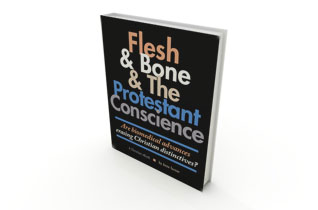A SistersSite eBook

Flesh and Bone and The Protestant Conscience is an e-book on Amazon.com. It is 99¢ and in the Amazon lending library as well. It is also available here in PDF format. The book description follows.
Does God care if the skin and bone of the dead are passed along to the living for medical uses? Is organ donation OK with God? Should you sign a Living Will?
Did you know that dead organ donors are often anesthetized before their organs are removed? Do you know the current definition of death? The conscience cannot function without facts.
As we ponder the ethics of in vitro fertilization, stem cell research and man-made chimeras, our thoughts trail off. How then should we live? (Ez 33:10)
How should a Christian think about euthanasia by starvation when doctors and the state attorney general all agree it is time to withhold feeding from a brain injured patient? Some things are family matters, but someday it may be our family.
Here is a small book to help you think about whether you want to sign your driver's license, donate a kidney, cremate your loved one, and many other practical questions that may arise in the course of your healthcare decisions or watch over others.
It offers a special focus on the doctrine of the Resurrection that is related to such decisions. Sunday School classes and Bible Study groups could use this book to facilitate discussion about the issues covered.